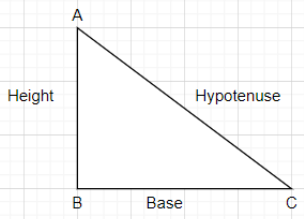Question
Question: Prove the given expression, \[\cos [ta{{n}^{-1}}\\{sin(co{{t}^{-1}}x)\\}]=\sqrt{\dfrac{1+{{x}^{2}}}{...
Prove the given expression, cos[tan−1sin(cot−1x)]=2+x21+x2 .
Solution
Hint: In this question, we have multiple trigonometric functions. So we have to do trigonometric conversion multiple times. We have inverse tan function and inverse cot function. Assume, θ=cot−1x and then transform cotθ into sinθ . Also assume β=tan−1(1+x21) and then transform tanβ into cosβ . Now, it can be solved easily.
Complete step-by-step solution -
Solve this question, step by step.
Treat sin(cot−1x) as the first part and then simplify this.
So, first of all, we have to solve sin(cot−1x).
Let us assume,
θ=cot−1x
⇒cotθ=x…………..(1)
We have, cotθ=Heightbase,

Base = x,
Height= 1,
Using Pythagoras theorem Hypotenuse =(height)2+(Base)2, we get
Hypotenuse= 1+x2
sinθ=hypotenuseheight
sinθ=1+x21
⇒θ=sin−1(1+x21)………………(2)
According to the question, we have \cos [ta{{n}^{-1}}{\sin({\cot}^{-1}}x)\\}]………….(3)
From equation(1), we have θ=cot−1x .
Substituting equation(1) in equation(3), we get cos[tan−1sinθ]…………..(4)
Now, using equation(2), equation(4) can be written as
